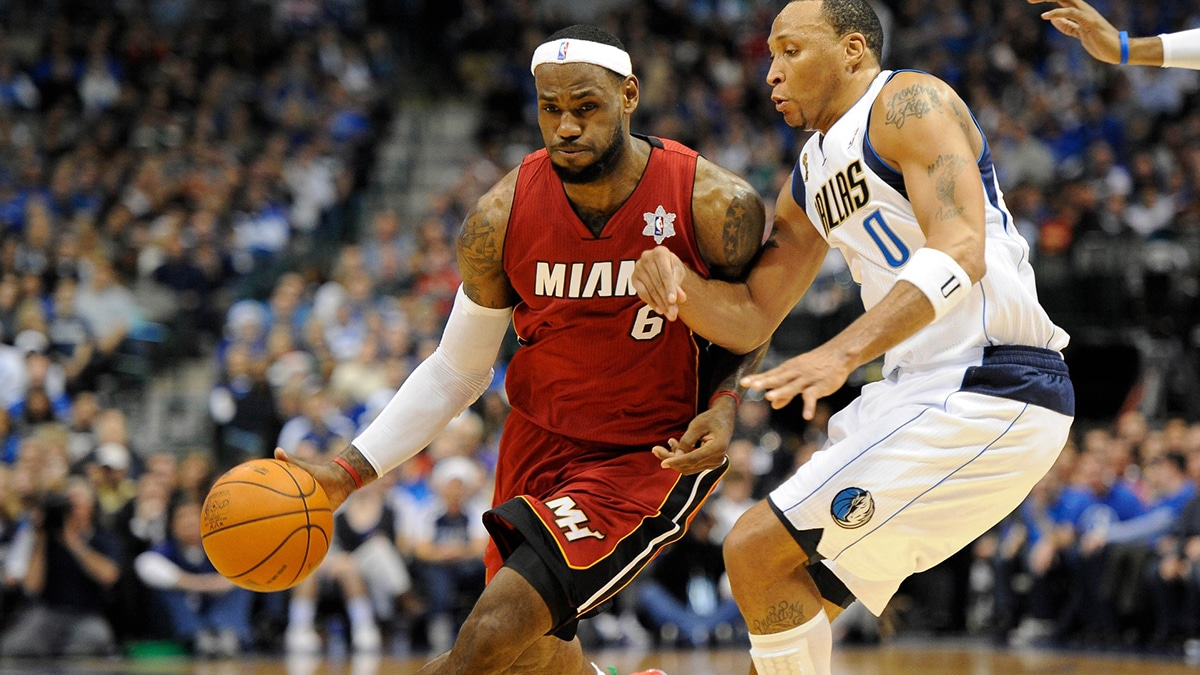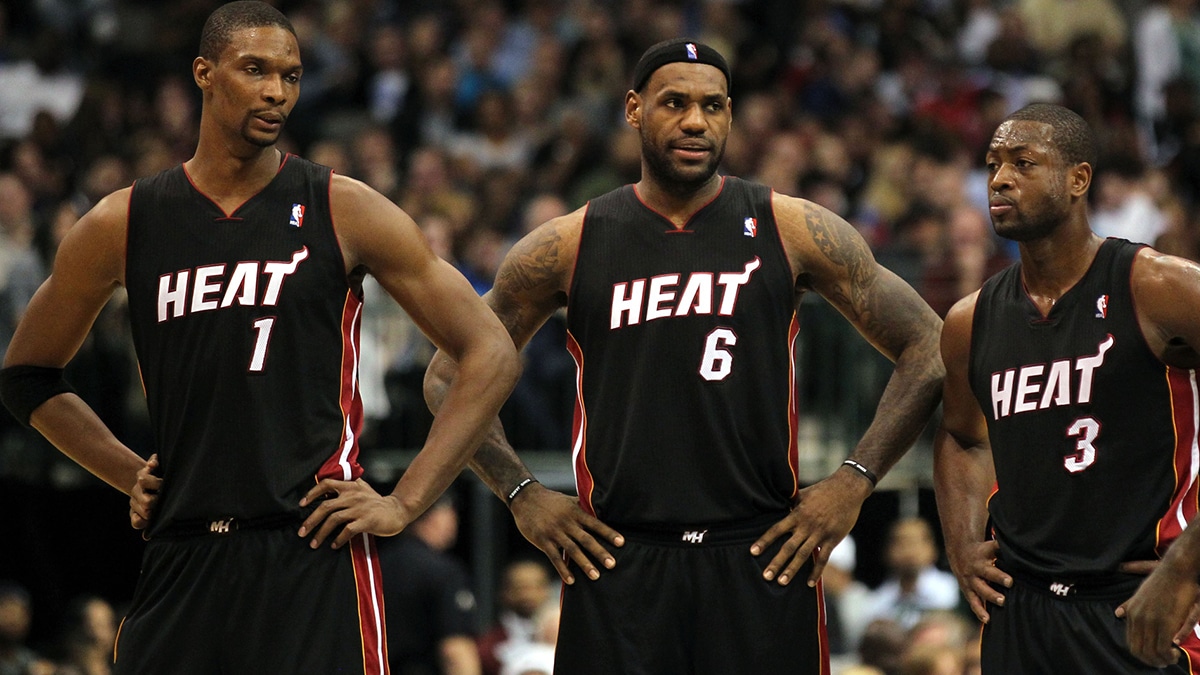In 2010, LeBron James became the NBA's ultimate villain when he decided to take his talents to the Miami Heat in a drawn-out free agency process, announcing his departure from the Cleveland Cavaliers in a controversial manner when he appeared on ESPN to make his decision. James and Chris Bosh both took less than the max just so they could join Dwyane Wade and form a powerhouse in Miami.
In the famous Heatles big three's first year together, they were a rousing success; following a middling 10-8 start, the Heat proceeded to go 48-16, finishing first in the Eastern Conference. They carried over this momentum towards the postseason, as they took care of their Eastern Conference opponents in the playoffs in a total of 15 games (five games per series) en route to an NBA Finals rematch against the Dallas Mavericks that was five years in the making.
We all know what happened next; LeBron James and the Heat fell short in ignominious fashion, with Dirk Nowitzki getting his redemption in a six-game series win for the Mavericks. While James has been wildly successful since then, winning four championships while being the Final Boss of the Eastern Conference for nearly a decade, he still rues the missed opportunity the Heat had in 2011 and chalked it up to their lack of depth.
“I mean obviously my first year in Miami, yeah we had a big three and everyone said it's a super team. Super team this super team that., but we had to build our team around all minimum guys. Which was still okay, but we didn't fill out the complimentary guys enough. Yeah we had Rio (Mario Chalmers), we had Udonis (Haslem) you know but we didn't have enough as far as enough complimentary guys to actually make it all work,” James said on the latest episode of his Mind The Game podcast with JJ Redick.
As much truth as there is to what LeBron James said, he is still downplaying how much talent the Heat had during the 2010-11 season. Sure, the team didn't have much depth, but they still had more than enough talent to win it all in 2011.
LeBron James gives credit where credit is due

Nonetheless, even though LeBron James felt as if the Heat didn't have enough talent in their supporting cast in 2011, he still tipped his cap to the heroics Dirk Nowitzki put in for the Mavericks in 2011 — a marvelous redemption arc following their contentious NBA Finals loss in 2006.
“We still made it to the finals, we still made it to the finals and we still probably should have won the finals but I still give credit. Listen you win and you lose and we lost. Dallas was f—n good and they hit a stride at the right time, Dirk was unbelievable,” James said.
LeBron James had his fair share of stinkers in the 2011 NBA Finals, including an inexcusable eight-point performance in a pivotal Game 4 loss that allowed the Mavericks to tie the series. But he vowed to be better, and in the following year, he finally got over the hump and won his first championship.
“I had to be f—n 10 times better than I was in that previous June finals,” James added.
The Heat learn from Chip Kelly

The Heat were one of the first teams that embraced the concept of spacing the floor from all five positions. During the 2012 NBA playoffs, the Heat began to go small, with Chris Bosh moving up to the five. In 2011, the Heat did not have the personnel to make it work.
But the following year, they were able to sign Shane Battier, the perfect fit for what LeBron James and company were trying to accomplish after Erik Spoelstra applied what he learned from Oregon football head coach Chip Kelly.
“That summer he went to Oregon and hung out with Chip Kelly. When we lost to Dallas he went to Oregon and hung out with Chip Kelly and learned the spread offense and tried to figure out if he could translate that to basketball,” James recalled.
“Chris Bosh had to go to the five. And CB being who he is, there was no push back, there was no push back. He knew in order for us to reach our potential that CB will have to go to the five and we had to spread and he had to start working on his corner three.”
Chris Bosh's midrange game seamlessly translated beyond the arc, and the Heat were able to vanquish huge playoff foes in the Eastern Conference, particularly the Indiana Pacers, by spacing the floor. This also unlocked the version of LeBron James that would run roughshod in the East for eight straight years — an offensive dynamo who puts pressure on the rim like no other by maximizing the spacing that's on the floor.




